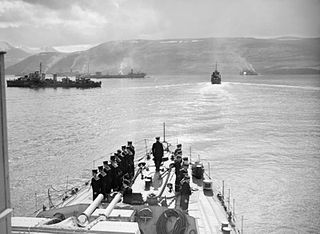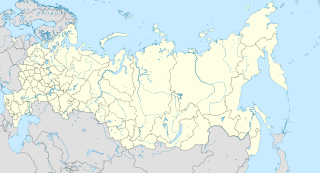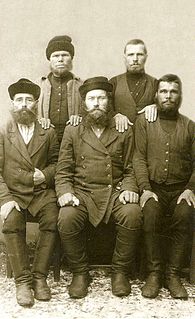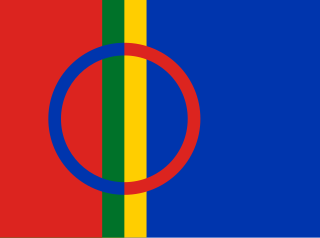 W
WThe White Sea is a southern inlet of the Barents Sea located on the northwest coast of Russia. It is surrounded by Karelia to the west, the Kola Peninsula to the north, and the Kanin Peninsula to the northeast. The whole of the White Sea is under Russian sovereignty and considered to be part of the internal waters of Russia. Administratively, it is divided between Arkhangelsk and Murmansk oblasts and the Republic of Karelia.
 W
WArkhangelsk, also known in English as Archangel and Archangelsk, is a city and the administrative center of Arkhangelsk Oblast, in the north of Western Russia. It lies on both banks of the Northern Dvina near its exit into the White Sea. The city spreads for over 40 kilometers (25 mi) along the banks of the river and numerous islands of its delta. Arkhangelsk was the chief seaport of medieval and early modern Russia until 1703. A 1,133-kilometer-long (704 mi) railway runs from Arkhangelsk to Moscow via Vologda and Yaroslavl, and air travel is served by the Talagi Airport and a smaller Vaskovo Airport. As of the 2010 Census, the city's population was 348,783, down from 356,051 recorded in the 2002 Census, and further down from 415,921 recorded in the 1989 Census.
 W
WBelomorsk is a town and the administrative center of Belomorsky District of the Republic of Karelia, Russia, located on the Onega Bay on the shore of the White Sea. Population: 11,217 (2010 Census); 13,103 (2002 Census); 18,935 (1989 Census).
 W
WBjarmaland was a territory mentioned in Norse sagas since the Viking Age and in geographical accounts until the 16th century. The term is usually seen to have referred to the southern shores of the White Sea and the basin of the Northern Dvina River as well as, presumably, some of the surrounding areas. Today, those territories comprise a part of the Arkhangelsk Oblast of Russia, as well as the Kola Peninsula.
 W
WRichard Chancellor was an English explorer and navigator; the first to penetrate to the White Sea and establish relations with the Tsardom of Russia.
 W
WChupa is an urban locality in Loukhsky District of the Republic of Karelia, Russia, located on the coast of the White Sea, 629 kilometers (391 mi) north of Petrozavodsk, the capital of the republic. As of the 2010 Census, its population was 2,924.
 W
WPQ 17 was the code name for an Allied Arctic convoy during the Second World War. On 27 June 1942, the ships sailed from Hvalfjord, Iceland, for the port of Arkhangelsk in the Soviet Union. The convoy was located by German forces on 1 July, after which it was shadowed continuously and attacked. The First Sea Lord Admiral Dudley Pound, acting on information that German surface units, including the German battleship Tirpitz, were moving to intercept, ordered the covering force built around the Allied battleships HMS Duke of York and the USS Washington away from the convoy and told the convoy to scatter. Because of vacillation by Oberkommando der Wehrmacht, the Tirpitz raid never materialised. The convoy was the first large joint Anglo-American naval operation under British command; in Churchill's view this encouraged a more careful approach to fleet movements.
 W
WSt. Herman of Solovki was one of the founders of the Solovetsky Monastery. In total, he lived in Solovetsky Islands, at the time, the most remote location, for about 50 years.
 W
WKandalaksha is a town in Kandalakshsky District of Murmansk Oblast, Russia, located at the head of Kandalaksha Gulf on the White Sea, north of the Arctic Circle. Population: 35,654 (2010 Census); 40,564 ; 54,080 (1989 Census).
 W
WKem is a historic town and the administrative center of Kemsky District of the Republic of Karelia, Russia, located on the shores of the White Sea where the Kem River enters it, on the railroad leading from Petrozavodsk to Murmansk. It had a population of 13,051 as of 2010, which was down from previous years.
 W
WThe Kola Norwegians are Norwegian people, who mostly settled along the coastline of the Kola Peninsula in Russia.
 W
WFriedrich Benjamin Graf von Lütke, more commonly known by his Russian name Fyodor Litke, was a Russian navigator, geographer, and Arctic explorer. He became a count in 1866, and an admiral in 1855. He was a corresponding member (1829), Honorable Member (1855), and President (1864) of the Russian Academy of Science in St. Petersburg. He was also an Honorable Member of many other Russian and foreign scientific establishments, and a corresponding member of the French Academy of Science in Paris.
 W
WThe Nenets, also known as Samoyed, are a Samoyedic ethnic group native to northern arctic Russia, Russian Far North. According to the latest census in 2010, there were 44,857 Nenets in the Russian Federation, most of them living in the Yamalo-Nenets Autonomous Okrug, Nenets Autonomous Okrug and Taymyrsky Dolgano-Nenetsky District stretching along the coastline of the Arctic Ocean near the Arctic Circle between Kola and Taymyr peninsulas. The Nenets people speak either the Tundra or Forest Nenets languages, which are mutually unintelligible. In the Russian Federation they have a status of indigenous small-numbered peoples. Today, the Nenets people face numerous challenges from the state and oil and gas companies that threaten the environment and their way of life. As a result, many cite a rise in locally-based activism.
 W
WOnega is a town in the northwest of Arkhangelsk Oblast, Russia, situated at the mouth of the Onega River, a few kilometers from the shore of the Onega Bay of the White Sea. Population: 21,359 (2010 Census); 23,430 (2002 Census); 26,070 (1989 Census).
 W
WPomors or Pomory are an ethnographic group descended from Russian settlers, primarily from Veliky Novgorod, living on the White Sea coasts and the territory whose southern border lies on a watershed which separates the White Sea river basin from the basins of rivers that flow south.
 W
WSabbatius of Solovki was one of the founders of the Solovetsky Monastery.
 W
WThe Sámi people are an indigenous Finno-Ugric people inhabiting Sápmi, which today encompasses large northern parts of Norway, Sweden, Finland and the Kola Peninsula within the Murmansk Oblast of Russia. The Sámi have historically been known in English as Lapps or Laplanders, but these terms are regarded as offensive by some Sámi people, who prefer the area's name in their own language, "Sápmi". Sámi ancestral lands are in the Volga region, in present-day Russia, like other Uralic peoples. Their traditional languages are the Sámi languages, which are classified as a branch of the Uralic language family.
 W
WSeverodvinsk is a city in the north of Arkhangelsk Oblast, Russia, located in the delta of the Northern Dvina River, 35 kilometers (22 mi) west of Arkhangelsk, the administrative center of the oblast. As of the 2010 Census, the population was 192,353. Due to the presence of important military shipyards, Severodvinsk is an access restricted town for foreign citizens. A special permit is required.
 W
WThe Solovetsky Monastery is a fortified monastery located on the Solovetsky Islands in the White Sea in northern Russia. It was one of the largest Christian citadels in northern Russia before it was converted into a Soviet prison and labor camp in 1926–39, and served as a prototype for the camps of the Gulag system. The monastery has experienced several major changes and military sieges. Its most important structures date from the 16th century, when Filip Kolychev was its hegumen.
 W
WThorir Hund was one of the greatest chiefs in Hålogaland. Tore Hund was one of the leaders of the Stiklestad peasant faction opposing Norwegian King Olaf II of Norway, later named St. Olaf. He was reported to have been among the chieftains who killed the king in the Battle of Stiklestad in 1030. He also served in the forces of King Canute the Great on several occasions.
 W
WThe White Sea–Baltic Canal, often abbreviated to White Sea Canal is a ship canal in Russia opened on Wednesday 2 August 1933. It connects the White Sea, in the Arctic Ocean, with Lake Onega, which is further connected to the Baltic Sea. Until 1961, its original name was the Stalin White Sea–Baltic Canal.
 W
WThe White Sea Biological Station (WSBS) named by A.N. Pertsov is an educational and research centre under the auspices of the Faculty of Biology of Moscow State University.
 W
WZosimas of Solovki was one of the founders of the Solovetsky Monastery established on the Solovetsky Islands in the White Sea of northern Russia.